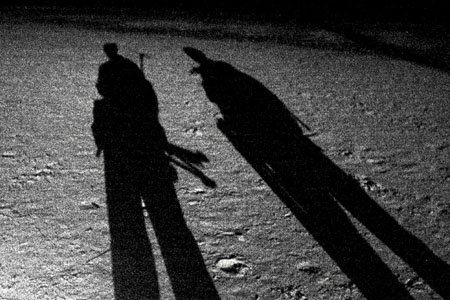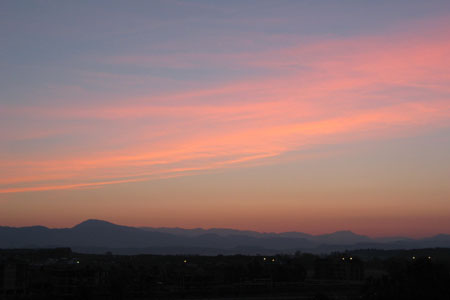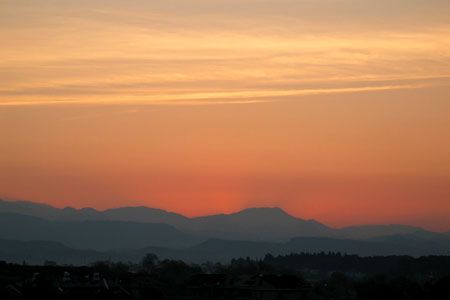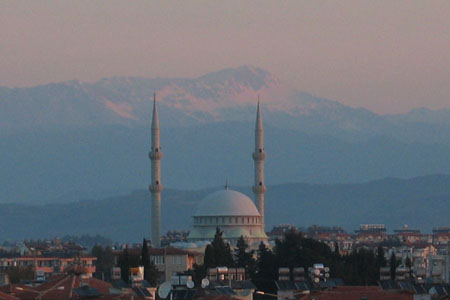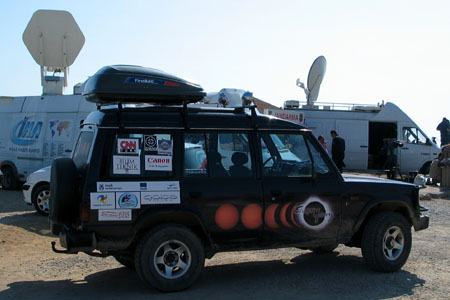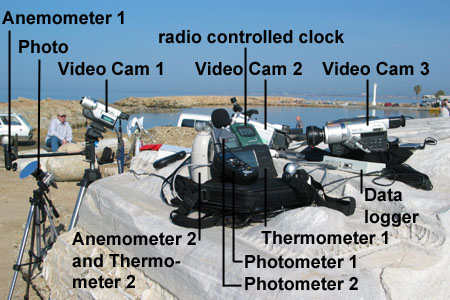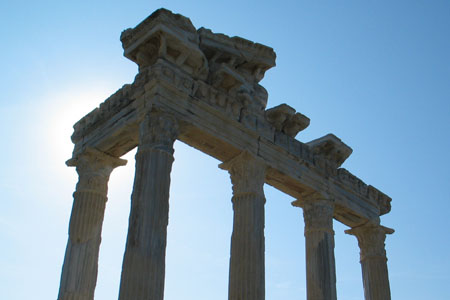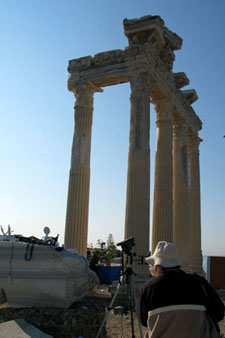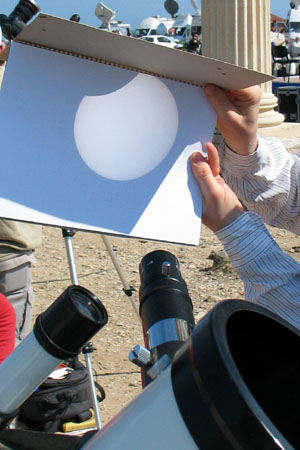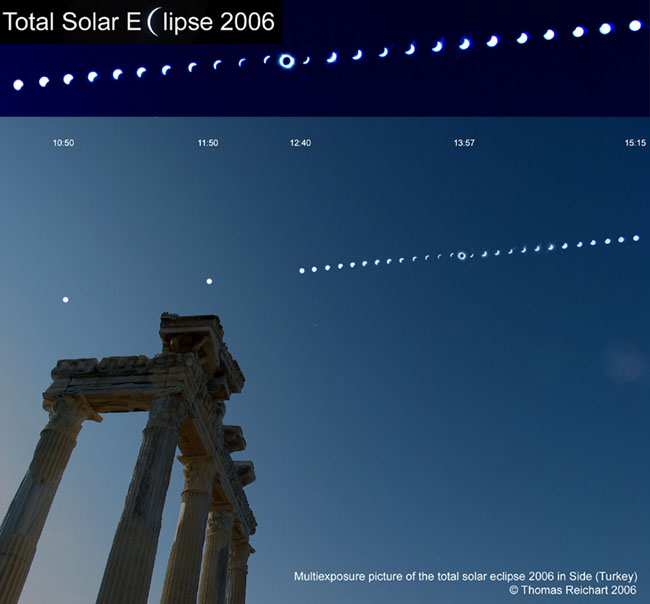
* Picture of the partial phase of solar eclipse at 13:49 o'clock (rotated counterclockwise 55°)
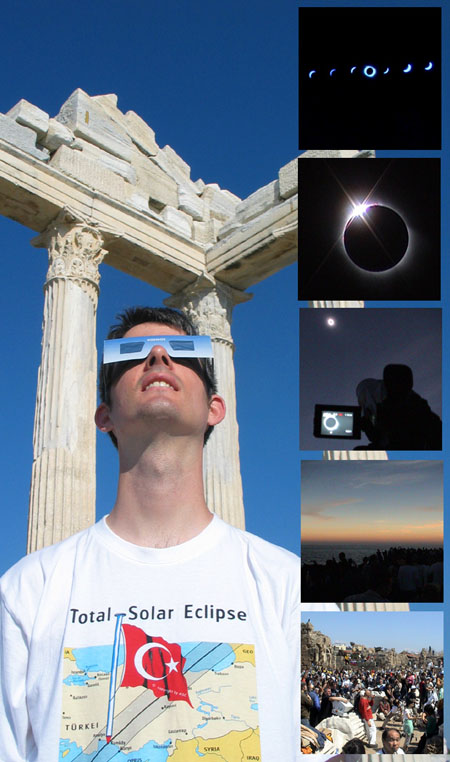
a) main picture: Thomas in front of columns of the Apollon Temple in Side
b) parts of the total eclipse around the totality
c) diamantring effect during the begin of the total phase of the eclipse
d) The videocamera filming the totality
c) dark Side with bright horizont during totality
d) people around the temple - a few seconds after totality bright sunlight
hits
the earth again
Parts of an artcile from the Frankfurter Allgeinen
Zeitung network edition which gives an good impression of my experiences
of the total eclipse in side:

29. März 2006 Vom Tempel des Apollon im südtürkischen Side sind nur noch ein paar Ruinen übrig, aber am Mittwoch wurden die antiken Steine zum Ort einer einzigartigen Party. Tausende Hobby-Astronomen aus aller Welt versammelten sich hier, um die vierte totale Sonnenfinsternis des Jahrhun-derts mitzuerleben.
Mittendrin: Thomas Reichart aus Stuttgart. Der junge Mann, der am Institut für Technische Biochemie der Uni Stuttgart seinen Doktor macht, hatte Meßgeräte mitgebracht - und auch seine Mutter, die die Messergebisse ihres Sohnes notieren mußte. Die Reicharts waren Mitglieder einer 500-köpfigen Gruppe aus Baden-Württemberg, die in Side gleich ein ganzes Hotel in Beschlag genommen hatte.
„Wunderbar, unglaublich!”
Die Sonnenfinsternis war im Süden der Türkei sehr gut zu beobachten, weil selbst Ende März die Chancen für einen wolkenlosen Himmel in dieser Gegend sehr gut sind. Die türkische Riviera hielt, was sie versprach, und bot am Mittwoch eine perfekte Bühne für das Himmelsschauspiel, das kurz nach Mittag begann. Mehr als zwei Stunden lang war die Sonne teilweise verdeckt, und für einige Minuten wurde die Sonnenscheibe ganz vom Mond blockiert. Wegen dieser Minuten waren Reichart und die mehreren tausend anderen Sonnenanbeter aus aller Welt in die Türkei gekommen. „Wunderbar, unglaublich”, sagte der Stuttgarter hinterher. Irgend jemand war im Getümmel vor dem Apollon-Tempel zwar gegen seine Meßgeräte gestoßen, aber immerhin stellte er fest, daß die Temperatur während der totalen Eklipse um zwei Grad fiel und daß der Wind beträchtlich zunahm.
In zwei Jahren will er auch bei der nächsten
Eklipse in China dabeisein. Dort wird er wahrscheinlich einige der anderen
Sterngucker wiedertreffen, die sich in Side eingefunden hatten.
Text: FAZ.NET mit Material von AFP, AP,
dpa
Bildmaterial: REUTERS, F.A.Z., AP, dpa/dpaweb, picture-alliance/ dpa/dpaweb
